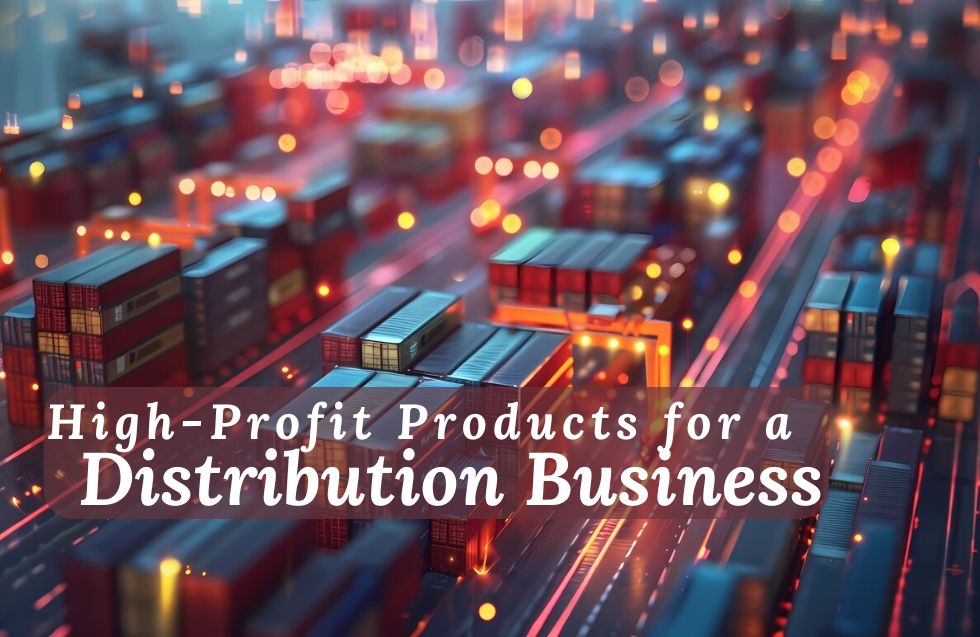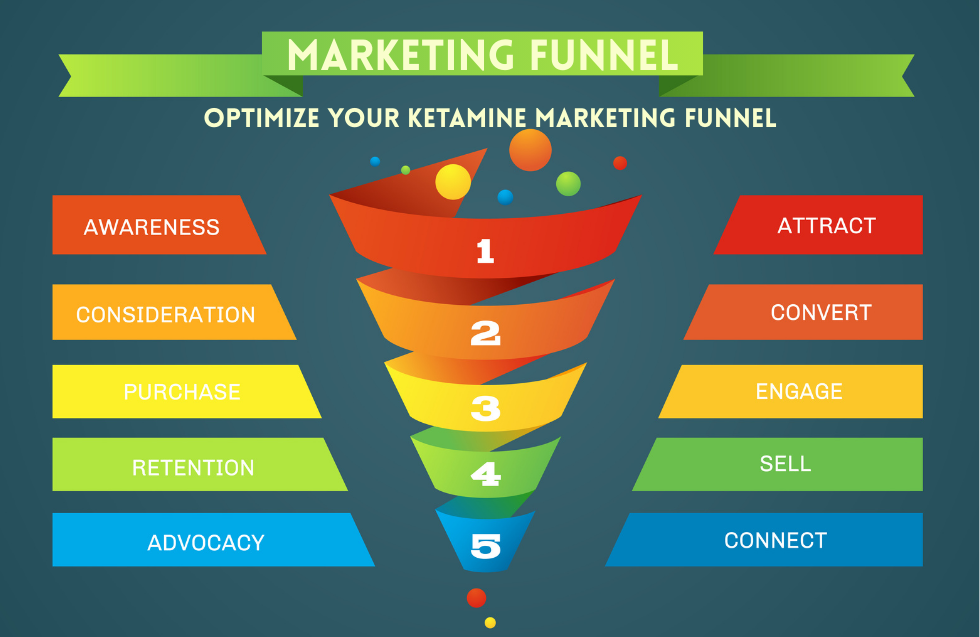The distribution business is an integral part of the supply chain, connecting manufacturers to retailers and end consumers. Choosing the right products to distribute can make or break your business. The key to success in distribution lies in selecting products with high demand, low competition, or a specialized niche where you can offer added value. Here’s a detailed look at some high-profit products that can drive success in your distribution business.
1. Health and Wellness Products
With the rise in health consciousness worldwide, products like vitamins, dietary supplements, fitness equipment, and organic foods are in high demand. The global wellness industry was valued at over $4.9 trillion in 2022 and continues to grow. Distributing health supplements or organic beauty products can offer high margins, especially if you target niche markets such as vegan, gluten-free, or all-natural products.
Profit Margin: 20% to 50%
Examples:
- Vitamins and supplements
- Organic skincare
- Fitness wearables
- Essential oils and aromatherapy kits
2. Eco-Friendly and Sustainable Products
As sustainability becomes a priority for consumers, eco-friendly products have taken off. Distributing products like biodegradable packaging, reusable water bottles, or eco-friendly household items can tap into the growing green movement. These products often come with higher price points, which can result in greater profit margins.
Profit Margin: 25% to 60%
Examples:
- Reusable grocery bags
- Solar-powered gadgets
- Eco-friendly cleaning supplies
- Sustainable fashion and accessories
3. Electronics and Gadgets
Electronics, from smartphones to smart home devices, remain highly profitable in the distribution sector. As consumers increasingly seek out the latest in technology, distributors that focus on gadgets and accessories can achieve excellent returns. Offering specialized products like gaming peripherals, phone accessories, or wearable tech can also provide high-profit margins due to the fast-paced evolution in this sector.
Profit Margin: 15% to 40%
Examples:
- Smart home devices (like smart locks and cameras)
- Wearable technology (fitness trackers, smartwatches)
- Gaming accessories (headsets, controllers)
- Phone accessories (chargers, cases)
4. Beauty and Personal Care Products
The beauty industry is a global powerhouse valued at $532 billion. From skincare and cosmetics to hair care products, the demand for high-quality beauty items is growing exponentially. Distributing premium beauty products, especially those that are organic or targeted to specific skin types or demographics, can yield high-profit margins. Beauty subscription boxes are also a trending product type that offers recurring revenue opportunities.
Profit Margin: 30% to 70%
Examples:
- Skincare (serums, anti-aging creams)
- Hair care (natural hair products, specialty treatments)
- Cosmetics (high-end makeup brands)
- Fragrance (perfumes, essential oils)
5. Pet Products
Pet ownership is on the rise, and so is spending on pet-related products. The global pet industry is projected to reach over $325 billion by 2028, and pet owners are willing to spend generously on their pets. Pet food, grooming supplies, and accessories offer attractive profit margins. Moreover, niche products like organic pet food or tech-related pet products (GPS collars, pet cameras) offer even higher margins due to their specialized nature.
Profit Margin: 20% to 50%
Examples:
- Premium pet food
- Pet grooming tools
- Pet tech gadgets (GPS collars, automatic feeders)
- Pet accessories (beds, toys, clothing)
6. Specialty Foods and Beverages
The demand for specialty food items such as gluten-free, vegan, organic, and gourmet products has grown substantially. Distributors who offer unique or hard-to-find food products can capture a loyal customer base willing to pay more for high-quality, specialized items. Craft beverages, including artisanal beers and organic wines, also represent an emerging trend with high profitability.
Profit Margin: 25% to 50%
Examples:
- Organic snacks
- Gourmet coffee or tea
- Craft beer and organic wine
- Gluten-free, vegan, or keto-friendly foods
7. Fashion and Apparel
Fashion is a lucrative distribution sector, especially when dealing with niche markets like streetwear, activewear, or sustainable fashion. Fast fashion items may have lower margins, but luxury or niche clothing brands can offer excellent profit potential. Accessories such as handbags, watches, or jewelry can also be high-profit items, especially if you can distribute unique, high-quality, or designer products.
Profit Margin: 20% to 60%
Examples:
- Athletic wear
- Designer handbags
- Sustainable fashion
- Luxury watches and accessories
8. Home Improvement and DIY Products
The DIY home improvement sector has seen significant growth, especially since the pandemic, with more people taking on home projects themselves. Items like tools, home improvement kits, paint supplies, and smart home devices are in high demand and can generate strong profit margins. Seasonal items like outdoor furniture or gardening tools also see spikes in demand and profitability.
Profit Margin: 25% to 45%
Examples:
- Smart home systems (thermostats, lighting)
- DIY tool kits
- Home renovation materials (tiles, paints)
- Outdoor and garden furniture
9. Automotive Parts and Accessories
The automotive industry has consistently shown that there is a strong market for replacement parts, accessories, and tech upgrades for vehicles. The aftermarket automotive industry was valued at over $390 billion in 2021, and there’s still room for profit, especially in specialized products like electric vehicle (EV) accessories, car detailing tools, and performance-enhancing parts.
Profit Margin: 15% to 40%
Examples:
- EV charging accessories
- Car detailing kits
- Performance tires and rims
- In-car tech gadgets (dash cams, GPS systems)
10. Education and Office Supplies
As remote work and online education become more popular, distributing office supplies, ergonomic furniture, and tech accessories for professionals and students can be highly profitable. Even though these products can be relatively low-cost, offering a wide variety at scale can lead to significant margins, especially for specialized or premium items like ergonomic chairs or tech accessories designed for comfort and productivity.
Profit Margin: 15% to 35%
Examples:
- Ergonomic office furniture
- Computer accessories (monitors, webcams, stands)
- School supplies
- Educational tools and software
Best Distribution Strategies
To run a successful distribution business, it’s not enough to focus on high-profit products alone—you need to employ efficient distribution strategies that maximize profit and minimize operational costs. Here are some of the most effective distribution strategies:
1. Direct Distribution
- What It Is: Selling products directly to retailers or consumers without intermediaries.
- Best For: High-margin products where maintaining control over the distribution process is crucial (e.g., premium electronics or niche beauty products).
- Advantages: Full control over pricing, marketing, and customer experience; higher profit margins since intermediaries are cut out.
- Challenges: Higher costs associated with warehousing, shipping, and managing sales channels.
- Profit Margin: 20% to 70%
2. Wholesale Distribution
- What It Is: Buying products in bulk from manufacturers and reselling them to retailers at a markup.
- Best For: Products with steady demand like electronics, beauty products, and specialty foods.
- Advantages: Volume-based discounts from suppliers allow for good profit margins; it’s easier to scale by working with multiple retailers.
- Challenges: Competition is high, and you may face tight margins if not buying at large enough quantities.
- Profit Margin: 10% to 40%
3. Drop Shipping
- What It Is: Selling products without keeping them in stock. When a customer places an order, you purchase the item from a third party, who ships it directly to the customer.
- Best For: Low capital investment businesses or companies looking to diversify their offerings without taking on inventory risks.
- Advantages: Low upfront cost; no need for inventory management or warehousing.
- Challenges: Lower profit margins and less control over product quality and shipping times.
- Profit Margin: 10% to 30%
4. Exclusive Distribution
- What It Is: Working with manufacturers to become the sole distributor of a product within a certain region or market.
- Best For: High-end or niche products, like luxury brands or specialized technology.
- Advantages: Minimal competition and higher profit margins due to exclusivity; strengthens relationship with the manufacturer.
- Challenges: Requires strong negotiations and can involve high marketing and customer support responsibilities.
- Profit Margin: 30% to 70%
5. Selective Distribution
- What It Is: Choosing a limited number of retailers or markets to distribute products.
- Best For: Products that need a controlled brand experience or are higher-end (e.g., beauty or automotive parts).
- Advantages: Higher level of control over the sales process and brand representation.
- Challenges: Limits scalability and may exclude large portions of the market.
- Profit Margin: 20% to 50%
How to Find the Best Suppliers
The quality and reliability of your suppliers will significantly affect the success of your distribution business. Here’s how to find and evaluate the best suppliers for your high-profit products:
1. Conduct Thorough Research
- Use online platforms like Alibaba, ThomasNet, and Global Sources to find reliable suppliers. These platforms provide detailed supplier profiles, reviews, and product offerings.
- Attend industry trade shows and conferences to meet suppliers in person and evaluate their product quality.
2. Evaluate Supplier Reputation
- Look for suppliers with a proven track record. Check reviews, request references, and ask about their experience working with other distributors.
- Ensure the supplier has the capacity to meet your volume needs consistently. The last thing you want is stock shortages when demand is high.
3. Check Certifications and Compliance
- Make sure the supplier complies with industry standards and has the necessary certifications (e.g., ISO certifications for quality management). This is particularly important in sectors like electronics, health products, and automotive parts.
4. Request Samples
- Before committing to a supplier, request product samples to ensure they meet your quality expectations. This is crucial for categories like beauty products or electronics, where quality can greatly impact your reputation.
5. Negotiate Terms
- Once you’ve identified potential suppliers, negotiate favorable terms, including pricing, payment terms, and delivery schedules. Building a good relationship with your supplier can result in better deals and priority during product shortages.
Final Thoughts
When selecting products for your distribution business, it’s crucial to focus on products with high demand and good margins. High-profit products are often those that cater to current trends, niche markets, or specialized needs. To maximize your success, it’s essential to build relationships with reliable suppliers, understand your target market, and stay informed about industry trends to ensure you are distributing products that are in demand and yield high profitability.
By strategically selecting products in these categories, you can position your distribution business for success and profitability in an increasingly competitive market.













